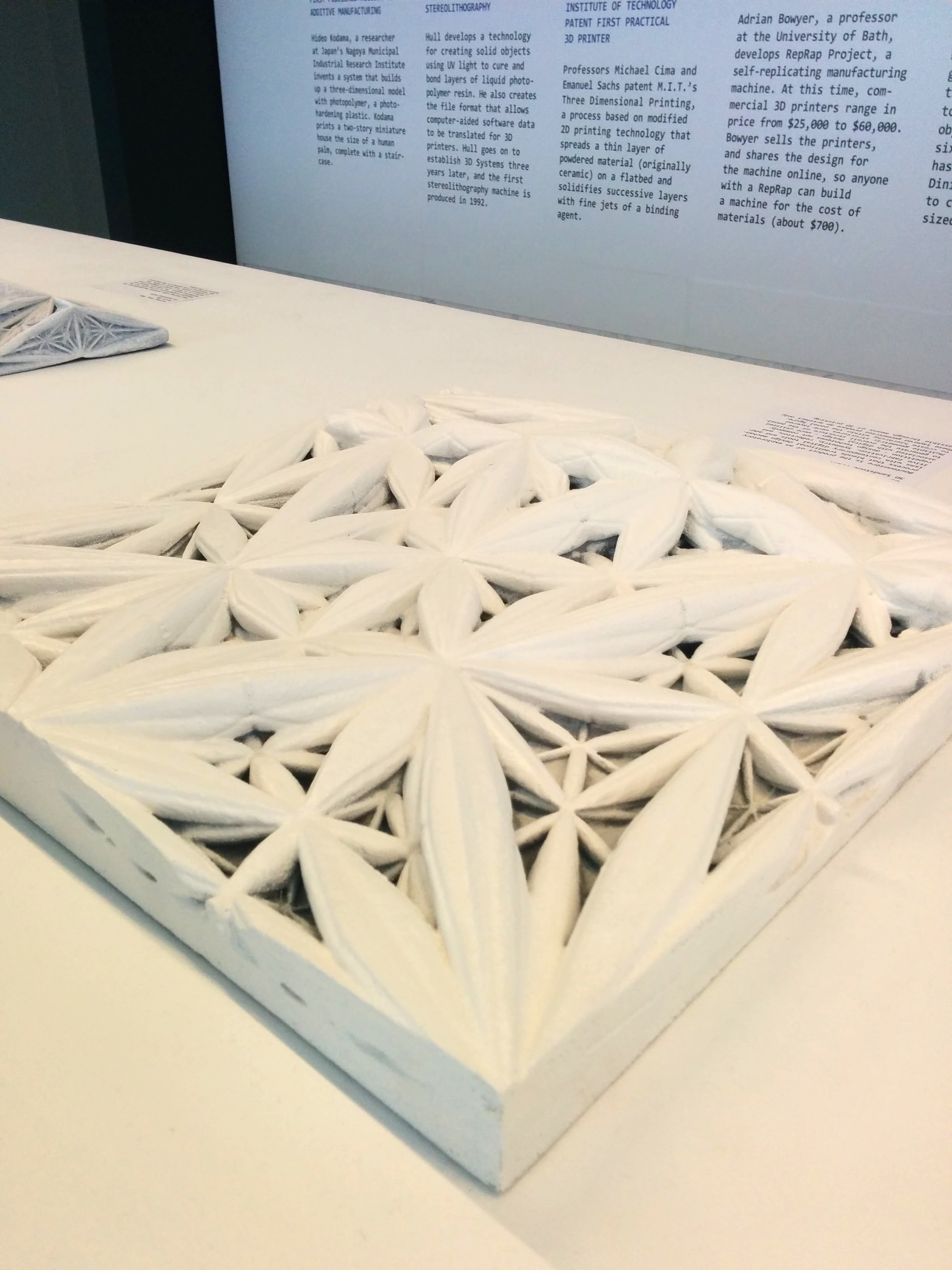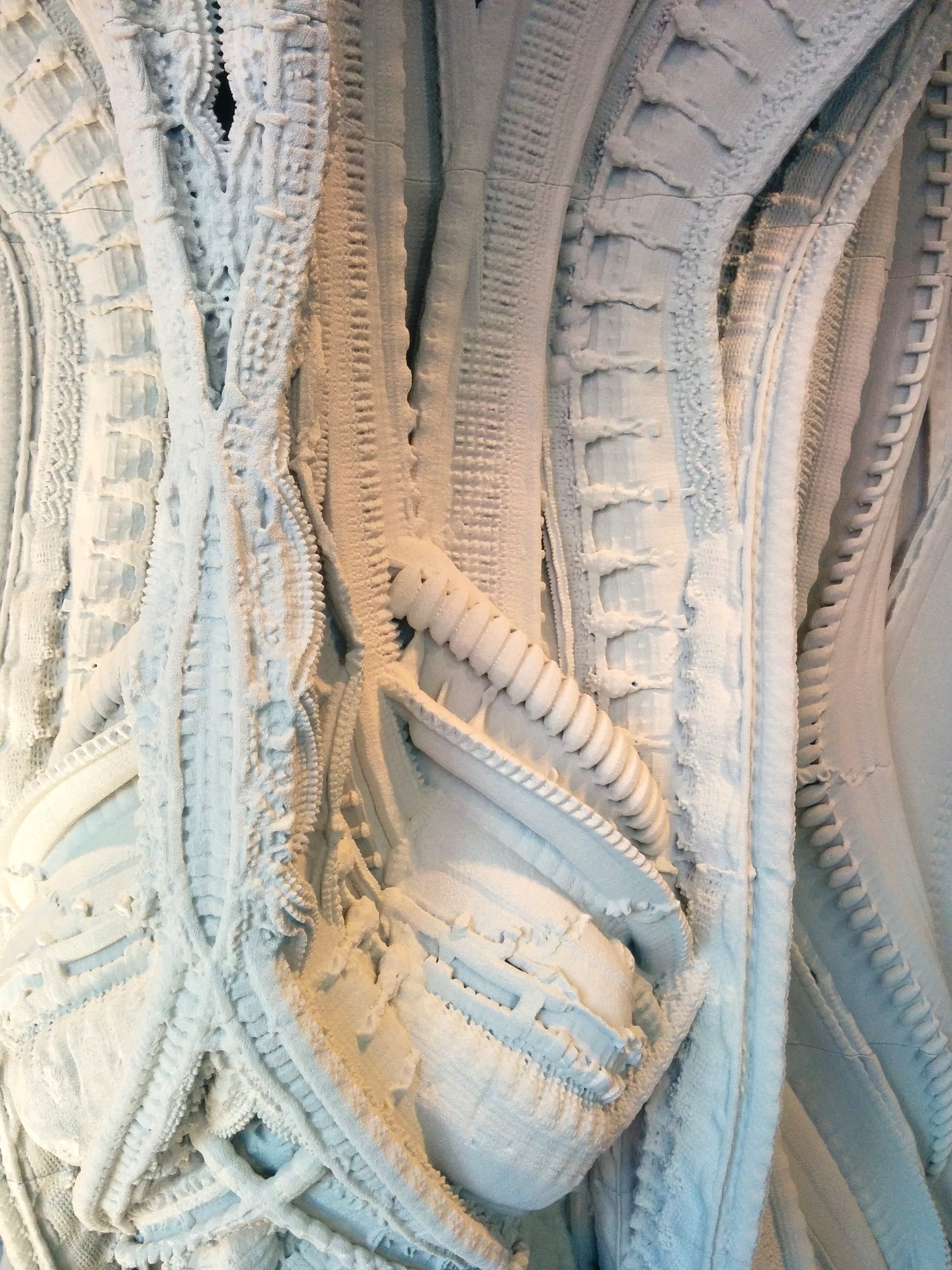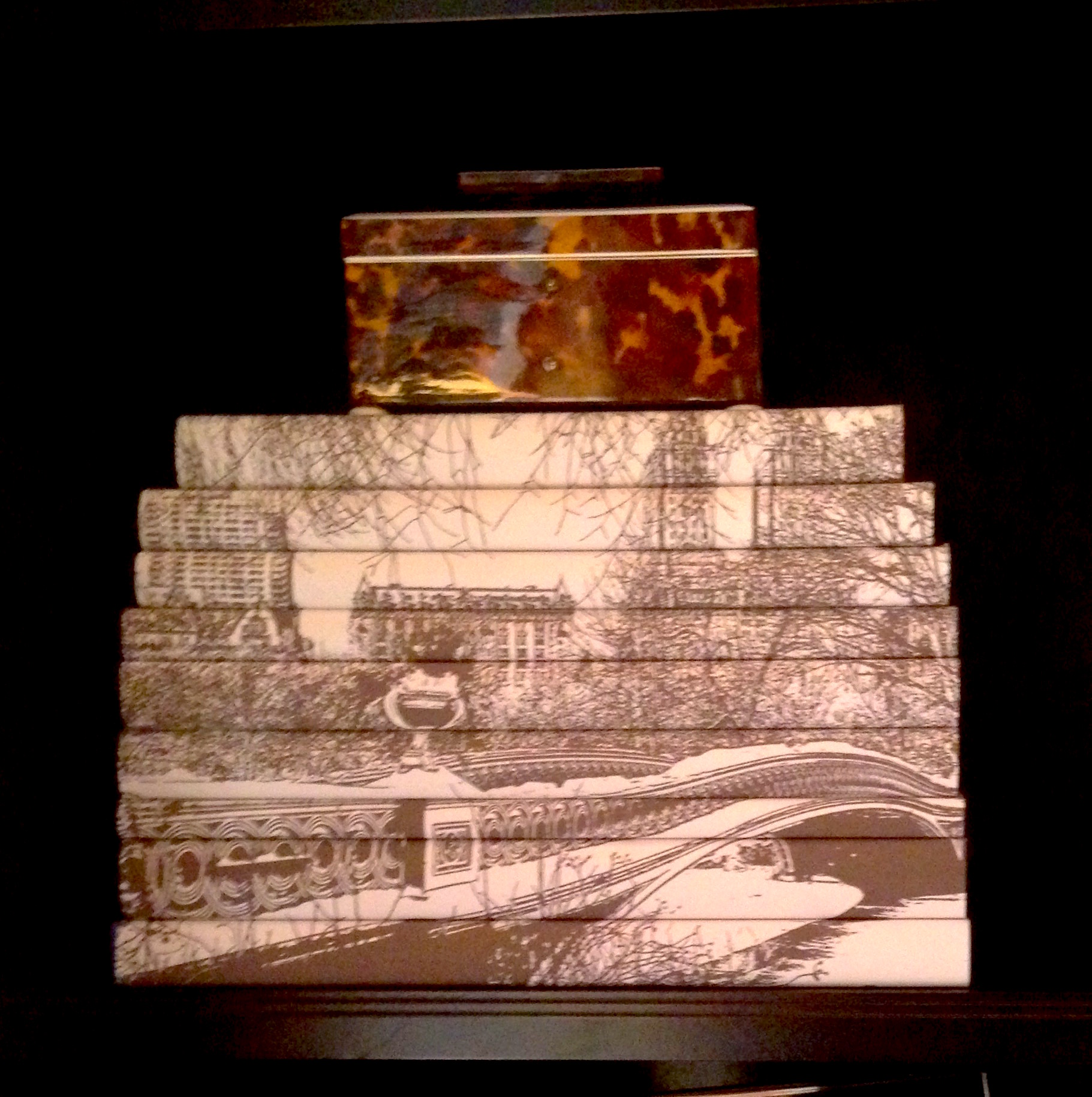Salty Gloo - Internal View Salty Gloo - Detail of an individual panel
Stepping around the corner of the last room in the exhibition, we were greeted by a larger sculpture, the “Arbesque wall,” by Benjamin Killenburger and Michaels Hansmeyer. When we saw the Arbesque wall, we decided that the technology today CAN still retain the feel of the hand-made touch needed in good design. In contrast to the smaller 3D printed objects and the designs produced by the robot printer, this sculpture is organic with undulating forms and details that are soft. The Arbesque wall is printed with the same sandstone feel and texture as the detail panels inspired by the Frank Loyd Wright textile blocks. The sandstone effect with the organic shapes of the sculpture is what sets it apart from the static 3D-printed plastic objects of the maker-bots and it also gives it the organic appearance. We were truly taken a back by its Gaudi-esk features .
An article in www.designboom.com describes the arabesque wall as, “a highly differentiated and spatially complex piece of architecture, whereby ornament and formal expression cease to be a luxury, focusing on a more unique, one-of-a-kind architecture. Pushing the boundaries of human perception, ‘arabesque wall’ offers up the tallest, entirely 3D-printed building component in stone realized to date.” The opportunities to mass produce cost effectively and quickly will soon allow 3D printing not to be the trend, but the norm. Imagine a time when both housing and monuments alike can articulate Gaudi-esk features. Perhaps this is an idea whose time has come and it won't be too far into the future before the everyday home can have the luxury of sandstone detailed walls. We cannot wait to see where this leads to and are eager to bring it into our design practice.




















































